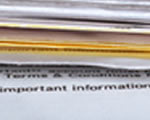 Go to main content
Go to main content
Archive Website of the UK government
Please note that this website has a UK government accesskeys system.
Main menu
Page menu
Parents

How the CSA works out child maintenance

The Child Support Agency (CSA) uses information from both parents to work out a child maintenance amount. Find out how child maintenance is worked out under 2003 scheme rules. You can also find out where to get information about the 1993 scheme.
Different rules for working out child maintenance
The way the CSA works out your child maintenance depends on when your case was opened.
If your case was opened after March 2003, child maintenance is worked out using the 2003 scheme rules (sometimes called 'current scheme'). If your case was opened before March 2003, child maintenance is worked out using the 1993 scheme rules (sometimes called 'old scheme').
For information about the 1993 scheme, download the following leaflets.
For information about being self-employed and using the 1993 scheme, download the following leaflet.
Information the CSA needs to work out child maintenance
To work out child maintenance, the CSA looks at several things, including:
- the non-resident parent’s net weekly income
- the number of children who need child maintenance
- how often those children stay overnight with the non-resident parent
- if there are any other children who the non-resident parent (or their partner) get child benefit for
- if the non-resident parent is paying child maintenance for any other children
A non-resident parent is the parent who the child does not normally live with.
The CSA gets this information from both parents. They can also get information about income from the non-resident parent's employer or HM Revenue & Customs (HMRC).
How the CSA works out a non-resident parent’s net income
The CSA counts the non-resident parent’s income as being:
- their earnings (including benefit payments)
- money from an occupational or personal pension
- certain tax credits
Net income is the amount of income that’s left after the following things are taken out:
- tax
- National Insurance
- pension contributions
Child maintenance rates
To work out a weekly amount of child maintenance, the CSA use:
- the non-resident parent's net weekly income information
- one of four 'rates'
The rate used depends on what the non-resident parent’s income is or if certain circumstances apply to them.
Once a rate has been used, other factors are considered. For example, if the children that need child maintenance stay overnight with the non-resident parent, the amount may be reduced.
Below is a summary of each rate.
Flat rate
The flat rate is £5 - no matter how many children are involved.
This rate is used if the non-resident parent’s net weekly income is between £5 and £100 and they don’t qualify for the nil rate.
It’s also used if the non-resident parent gets certain benefits, including (but not limited to):
- Armed Forces Compensation Scheme payments
- Bereavement Allowance
- Incapacity Benefit
- Income Support
- Employment and Support Allowance
- Jobseeker’s Allowance
- Pension Credit
- State Pension
- Training Allowance
- War Disablement Pension
If the non-resident parent has a partner they live with, the flat rate will be used if the partner gets:
- Income Support
- income-based Jobseeker’s Allowance
- income-related Employment and Support Allowance
- Pension Credit
Basic rate
Basic rate is used if a non-resident parent has a net weekly income of £200 or more.
The basic rate is a percentage of net income. The percentage used depends on:
- the number of children needing child maintenance
- the number of other children the non-resident parent (or their partner) get child benefit for
Reduced rate
Reduced rate is used if the non-resident parent’s net weekly income is more than £100 but less than £200.
The non-resident parent pays:
- the flat rate of £5
- plus a percentage of their net weekly income between £100 and £200
The percentage is used in the same way as with the basic rate. However the size of the percentage is different from basic rate.
Nil rate
Nil rate is used if a non-resident parent:
- is a student
- is a child
- is a prisoner
- gets an allowance for work-based training or Skill-seekers training (in Scotland)
- lives in a care home or independent hospital and gets help with the fees
- is between 16-17 years old and they or their partner get certain benefits
Child maintenance calculator
You can use the online child maintenance calculator to see how much child maintenance might be payable.
If the non-resident parent has to pay for other children
Sometimes a non-resident parent uses the CSA to pay child maintenance to more than one parent with care. The parent with care is the parent or carer who the child normally lives with.
In these cases the CSA will:
- work out the total amount of child maintenance the non-resident parent has to pay
- divide that amount between all the parents with care, according to how many children they each care for
For more information about how child maintenance is worked out in 2003 scheme cases download the following leaflet.
More useful links
In this section...
- Changes you need to tell the CSA about
- Complaining about the service you receive from the CSA
- Disagreements about parentage - what the CSA does
- How the CSA collects and uses information
- How the CSA deals with non-payment
- How to pay child maintenance through the CSA
- If you disagree with a CSA decision
Additional links
Family-based arrangements
Did you know? You and the other parent can also arrange child maintenance without anyone else getting involved. Find out about family-based arrangements